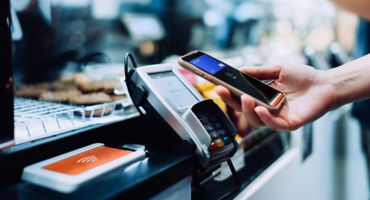The continued growth of embedded finance — Matt Ross
Embedded finance is rapidly expanding as companies outside of traditional financial services increasingly offer financial products to their customers. This is now possible as, for the first time in the banking sector’s history, balance sheet management and distribution no longer need to be under one brand in order to reach the scale and unit economics necessary for a company to sustain growth. Over the last five years, there has been an explosion of opportunity as new and incumbent players in the industry have built standalone entities for both the technology and business processes of financial services. There are now numerous software platforms that will never look like a traditional bank but can offer their customers bank-like products.
This opportunity set ranges from a payments provider with a consumer-facing P2P brand providing access to a new customer base to an accounts payable software company offering working capital loans. This is only scratching the surface of the potential for companies across countless sectors to offer embedded financial products to their customers in 2023 and beyond.
Buy-now-pay-later’s long-term potential — Matt Lipton
BNPL, the growing method of payment that provides customers with installment credit for e-commerce transactions, was one area that saw a considerable pullback in 2022. Despite this headwind, I believe BNPL will continue to drive a revolution in how certain cohorts of the population pay for goods. Historically, consumers have been able to buy goods in installments in brick-and-mortar stores. But the lack of an equivalent in e-commerce left a US$300 billion potential opportunity unaddressed. BNPL has begun to capture this market and currently represents two to three percent of all purchases online. I believe it has the potential to hit double digits as it grows throughout the 2020s.
Perhaps more importantly, I think BNPL’s reputation as subprime borrowing is undeserved. In my view, many BNPL users come from the credit card industry’s most lucrative customer base — the financially savvy middle tier of borrowers that revolve a few times a year, nearly always pay back, and realize this product could substantially lower their borrowing costs. I believe BNPL’s compelling value proposition — combined with this shrewd customer base — creates the opportunity for significant growth potential.
Cryptocurrency and digital assets in 2023 — Ranjit Ramachandran
Amid the volatility and drawdowns of the “crypto winter,” I believe many are missing the longer-term opportunities that these assets could offer. For instance, beyond their potential to improve near-term inefficiencies like cross-border payments, I think crypto’s technology could rapidly evolve how we think of digital identity on the internet, including in e-commerce. Furthermore, digital assets have created huge opportunities to disrupt illiquid asset classes. New digital assets could provide liquidity, divisibility, and mobility through tokenization in areas like private investments, illiquid fixed income, and real estate.
In my view, we are in the early days of the cryptocurrency and digital asset opportunity set, not unlike the dawn of other technological revolutions like the internet. Critically, in 2023, I’m watching for regulatory movement as I believe classifying many of these assets as securities could be a great catalyst for the industry.
Opportunities in financial services incumbents — Bruce Glazer
Much of the buzz around fintech relates to disruptive innovations like those highlighted above. But often, in my view, investors can underestimate the power of incumbency. In 2023, I expect leading fintech companies with scale and distribution will continue to leverage their platforms, organic innovation, and M&A activity to drive growth amid the sector’s disruption.
In many markets, I believe new entrants are better served by partnering with these incumbents than by competing with them. This enables companies and their investors to potentially have the best of both worlds: enhanced product offerings accessing the latest technology (like the cloud, machine learning, and digital wallets) combined with the scale and infrastructure new fintech providers often lack.














